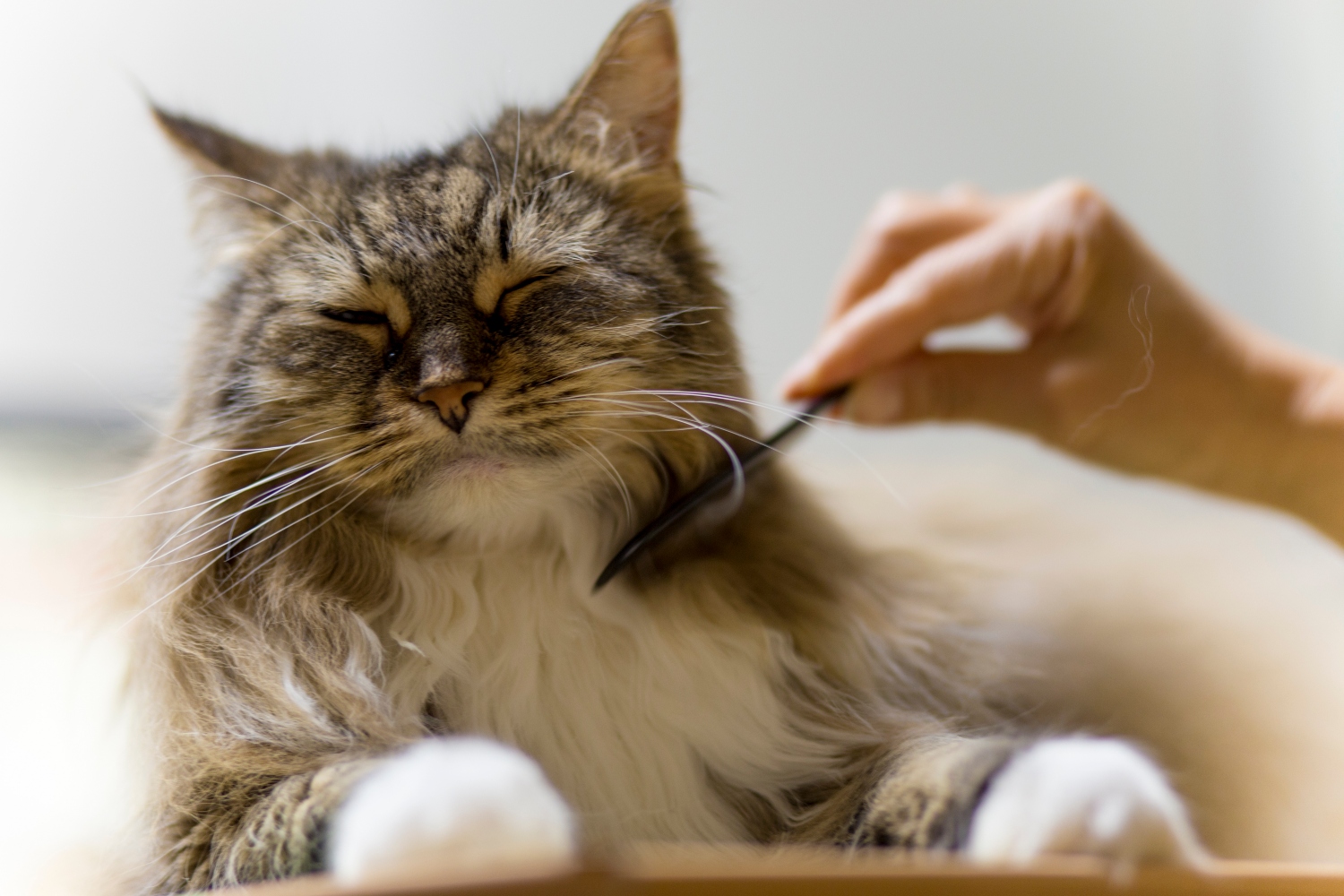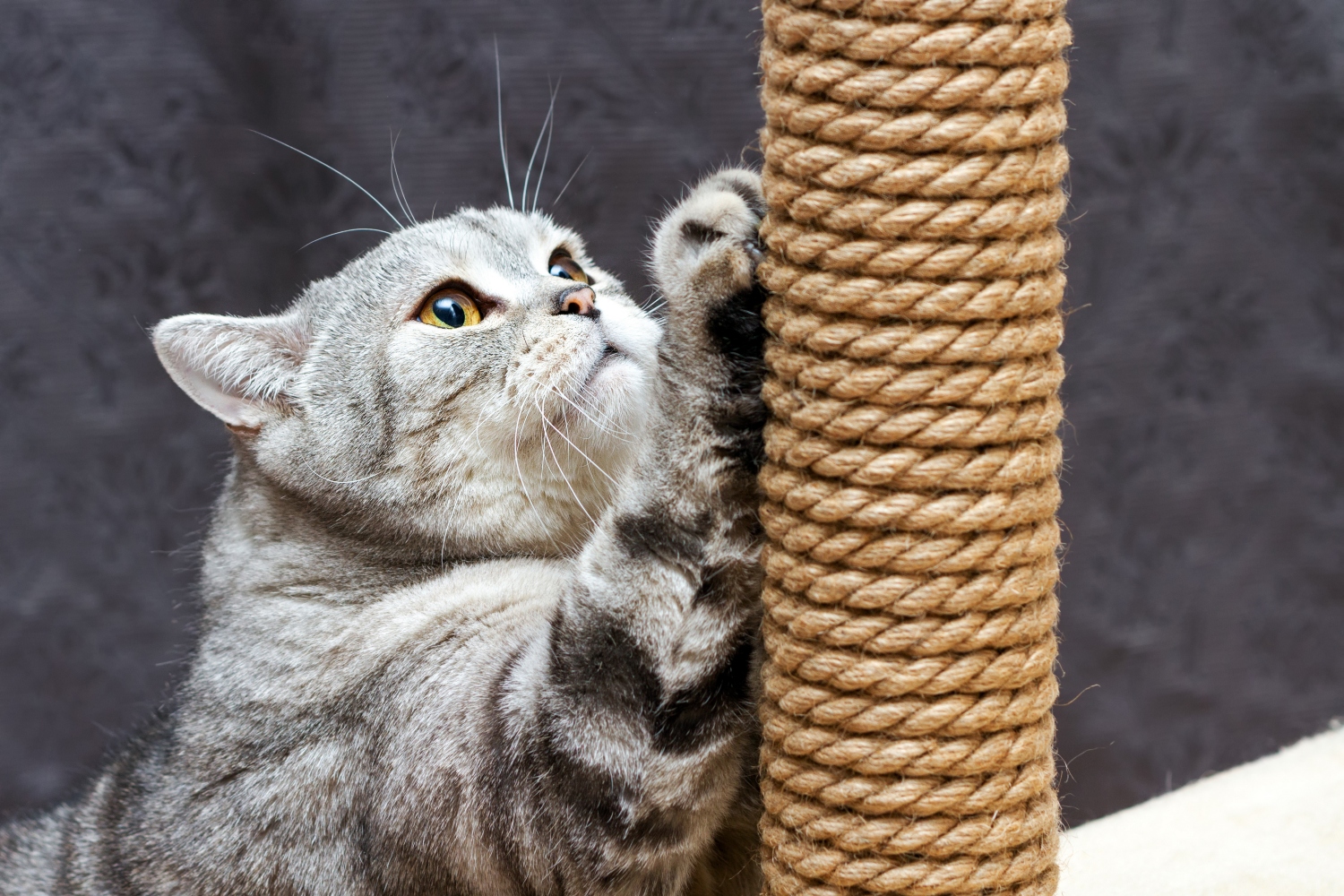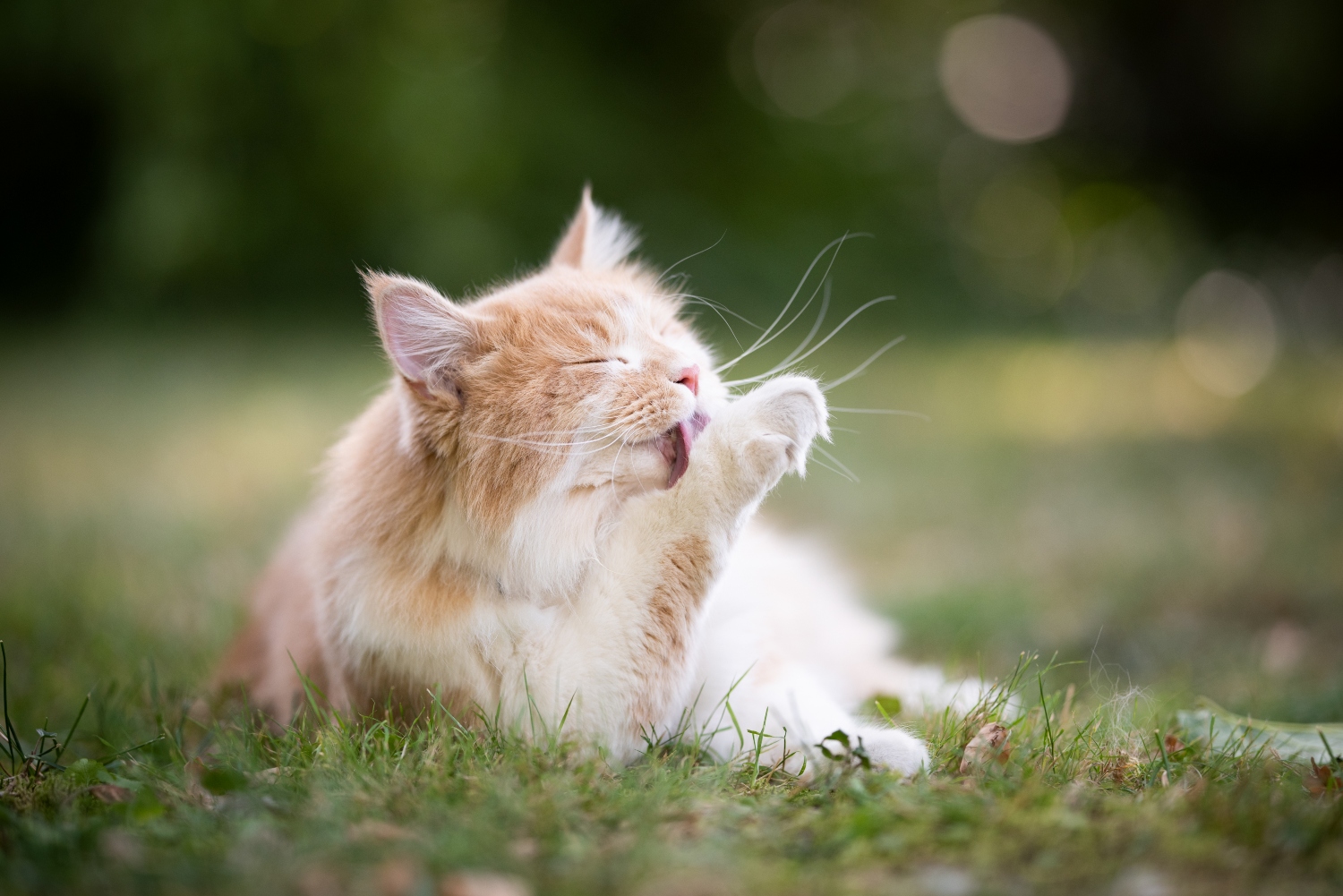
7 mistakes to avoid when grooming your cat
13th April, 2023
If you’re forever getting nipped and scratched while grooming your cat, you might be making these mistakes! Learn how to avoid them and make it more enjoyable for your pet.
Is it grooming time again already? Now, you’d be right in thinking that cats are naturally clean creatures. They can often be found licking their paws clean or grooming their coat – but that doesn’t mean you shouldn’t have a regular grooming schedule set up.
Even if you do, are you taking the time to do it stress-free? Raking a brush through huge clumps of knots and scrubbing those sore red gums and teeth isn’t your idea of fun, right? Well just imagine how your feline feels!
So, what can you do to make it a positive experience? Proper grooming not only keeps your cat clean and healthy. It also boosts your bond, making that connection between the two of you stronger than ever (if that’s even possible).
Below, we take a look at some common mistakes to avoid and how to pamper your pet to perfection with some expert tips.
We’ll also share a few other ways to help your ageing mog enjoy its golden years, like taking them for regular check-ups and investing in senior cat insurance.
So, why is grooming important for your old cat?
Have you ever noticed your feline smelling a little funky? Probably not! Cat’s love a bit of self-pampering, and it’s not only to keep them clean. Just take a look at the other benefits grooming can have on your precious pet:
- Improved muscle tone
- Better insulation thanks to smoothed down fur
- Boosted circulation
- Keeps fur waterproof by stimulating certain glands and spreading natural sebum
- Cools them down in hot weather
- Removes loose fur to prevent furballs
- Prevents matting (this poor puss had 300g of matted hair removed!)
While your cat can self-groom by licking, it needs a bit of help regarding oral hygiene and nail clipping. Dental disease is a top health concern in old cats, which can lead to more serious problems down the line.
Without proper tooth brushing, you’ll soon be claiming on your senior cat insurance for something far more serious than a case of foul-smelling breath!
7 top cat grooming mistakes
Still not convinced your comb-fearing cat will change their opinion? Perhaps you’re making too many common mistakes – don’t worry, you’re not the only one.
Are you guilty of any of these?
-
Not starting young
OK, we know your cat’s no longer a kitten, but that doesn’t mean it’s too late to start pampering them. The sooner you start a regular schedule, the sooner your pet will start to enjoy it.
Whether you’ve never kept to a frequent routine or you recently adopted an older cat, you can still make it an enjoyable experience for you both. Stick to brushing every few days and use positive reinforcement as soon as you bring them home to get them used to the process.
-
Not grooming often enough (or at all)
Many pet parents believe that getting away with the odd brush (we’re talking once every few months) is perfectly fine – sadly, it’s not. Even for your regular short-haired feline friend, you need to brush at least twice a week.
Got an ageing cat with luscious long locks? Get your brush out daily to avoid mats and dirt and grime build up.
Avoiding knots isn’t the only reason you need to comb on a regular basis. You’ll reduce the chances of dreaded furballs and spot any fleas that might have moved in as early as possible.
The last thing you want is for you, your cat and your home to become host to these pesky pests! Learn what other signs to look out for in our article about fleas on cats.
-
Creating the wrong atmosphere
What’s the first thing you think of when we mention a day at the spa? Calming music? Soothing massage? Therapeutic hot tubs? If there’s one thing all of these have in common, it’s relaxation. And your cat grooming session should be just that!
Be patient with your pet. Get them up on your lap and start with some gentle strokes before introducing the brush. Take things slowly and be careful with knots.
Before you know it, Tom will be jumping onto your lap every evening for a couple of minutes of pure rest and relaxation. Purrrfect.
-
Using the wrong brush the wrong way
One of the most important pieces of equipment for cat grooming is the brush. Isn’t a brush just that, though? A brush? Well, yes, but the extensive selection you see on offer at your local pet shop isn’t just for show.
Not sure what’s right for your pet? Battersea has some top tips on selecting the right brush:
- Mitt brush – these hand mitts with rubber teeth are ideal for beginners as it replicates stroking your pet. Some cats might not even notice you’re brushing them!
- Rubber brush – another great option for newbies, these brushes work on all coats and help to massage the skin and spread natural oils evenly.
- Slicker brush – these can be curved or slanted and have extra thin hooks, making them ideal for medium to long-haired felines.
- Dual-sided brush – for short to medium length fur, get this two-in-one model with fine teeth on one side and soft bristles on the other.
- Moulting comb – forever picking up hairs? This special brush with different length pins works to remove loose hairs on all types of coat.
- Grooming comb – all these combs come with the same length pins. Choose one with a larger space between teeth for long hairs and a smaller space for short fur.
- Flea comb – does what it says on the tin and helps rid your pet of fleas and eggs. Speak to your vet to combat the infestation!
- Pin brush – cat covered in mats? That’s no match for this pinned brush, which tackles knots and tangles (ideal for long locks).
- Bristle brush – completely covered in soft bristles, this brush is ideal for all coats. If your pet has very short hair, this could be all it needs for a sleek, shiny coat.
Once you’ve got the brush (or brushes) to suit your cat’s fur, make sure you brush in the right direction.
Going against the direction of fur growth could really hurt your pet, resulting in a scratch or two for you!
-
Pulling out matted fur
With long haired cats, you’re bound to be faced with a mat or 10 now and again, which might tempt you to get out the kitchen scissors. But wait – one slip, and your cat could need stitches!
If you own cat-specific clippers, these are a much better option. Never pull at mats, though, as this can hurt and distress your pet. If knots are just too stubborn to get out yourself, your vet or a professional groomer can help.
Remember, grooming isn’t included on senior cat insurance, so you’ll need to make sure you budget for this when you bring a feline friend home.
-
Being too rough
You wouldn’t like someone pulling at your hair or cutting your nails too short, would you? Neither does your mog!
Be gentle with your cat. They have surprisingly small bodies without all the fluff (if you’ve ever seen one after a bath, you’ll know what we mean), so a delicate touch goes a long way.
Remember to brush with the grain, and why not spend a few extra minutes massaging those spots that sends your ageing pet into zoned out bliss? They’ll be begging you to brush them tomorrow!
-
Giving the wrong nail care
Ever ripped your nail on something? Ouch! That’s what happens when they get too long. Clipping your feline’s claws every couple of weeks stops them from snagging on carpets and causing injury.
If you’re a bit hesitant to get close to those grappling claws, don’t worry. Make sure your pet has plenty of scratching posts and other surfaces to claw at to keep their nails naturally short.
Is grooming a traumatic experience for cats?

If you try to groom an already frightened cat, of course it’s going to be traumatic. If you make an effort to help them relax the first few times and avoid the mistakes mentioned above, there’s no reason why your beloved pet shouldn’t enjoy the experience (or at least tolerate it).
How to tell your cat isn’t happy being groomed
So, before you establish a proper grooming routine, you might have the odd hiccup along the way, and that’s completely normal. Knowing how to identify the signs your cat isn’t in the mood and when to take a break are key to long-term grooming success.
Understanding your cat’s feelings isn’t always easy, but there a few subtle signs of distress to watch for:
- A swishing or thumping tail
- Freezing and tensing up
- Skin twitching and rippling (especially on their back)
- Dilating pupils
- A sharp head turn towards your hand (watch out fingers!)
- Flicking and rotating ears
- Head shaking
- Lip licking and swallowing
- Suddenly grooming a specific part of its body excessively
- Growling and hissing
To make sure your cat doesn’t associate grooming with negativity and being punished, stop right away if you see any of these signs. You can always try again later or tomorrow.
Occasionally, your old pet might be sensitive in certain areas due to pain or inflammation. If you’re worried this might be the case, get them seen by the vet – your senior cat insurance can help with the medical bills.
How long can I leave between grooming sessions?
For standard brushing, you shouldn’t leave any more than a couple of days between getting out the comb – go no more than every other day for long-haired breeds. These felines need it every day ideally.
Seniors who have trouble with mobility and flexibility need grooming more often than their younger, fitter counterparts. Those with arthritis and similar conditions really need you to step in and help with their general hygiene.
When it comes to nail clipping, if you haven’t got scratching posts around your home, you’ll need to do it every couple of weeks.
And those gnarly gnashers? To prevent gum disease and other oral health issues (extremely common in old cats), you should be brushing them daily.
If you’re not sure about anything related to grooming or if you have another question relating to your geriatric pet’s health, don’t hesitate to call us.
Every senior cat insurance policyholder with Petwise has access to our unlimited 24-hour vet video service.
Quick cat grooming tips
If you’re new to the cat grooming game and not sure where to start, fear not! Here’s a quick step-by-step guide on doing it right.
- Start by popping your mog on your lap and giving them a soothing massage. Not only will this help them relax, but it also loosens fur that might otherwise be tough to get out with a brush.
- Grab your flea comb first. Run it through their fur to make sure there are no nasty pests lurking in the depths or any eggs waiting to hatch. If you spot anything suspicious, speak to your vet about treatment (not included on senior cat insurance).
- Now, get the brush specific to your cat’s coat type and run it from head to tail, working in the direction of growth. Be careful around the tops of the legs of long haired breeds. Knots love to hide here! Remember not to tug if you come across any.
- Finally, you’ll need your hand mitt or rubber brush to collect any loose fur on the surface. Again, move from head to tail and your pet will be left silky and shiny.
How to brush your cat’s teeth
You’ve got brushing your cat’s coat down to a tee and aren’t bad at keeping their nails neatly trimmed either. All that’s left to master is tooth brushing.
We get that this can be a little daunting with those sharp pin-like teeth glaring at you, but this shouldn’t put you off.
Staying on top of oral hygiene is vital to your senior pet’s overall health. It starts with smelly breath and browning teeth but can soon lead to more serious health conditions.
Remember, senior cat insurance with us comes with dental cover as standard for accident and illness!
So, it’s time to face your fears and get brushing daily. International Cat Care has some tips to help. First, you’ll need:
- A cat toothbrush (a separate one for each pet if you have more than one)
- Cat toothpaste (the human kind isn’t suitable for felines)
Once you’re ready, follow these steps:
- For the first day or two, pop a small blob of toothpaste on your finger and let your cat smell and lick it.
- Practise how to hold your cat’s head several times a day (best to do it when they’re a bit sleepy) and use your thumb and index fingers to open their mouth.
- Put the toothpaste on a cotton bud and slowly introduce it into their mouth and rub it around teeth and gums. Start at the back and move forward.
- Once your cat is comfortable with the cotton bud, introduce the toothbrush and go from back to front on both sides, top and bottom.
If your feisty feline seems like it wants to stop, do. It’s better to take things slowly and establish a solid routine than start a battle every time.
Got a wriggler on your hands? It might be easier to wrap them in a blanket for a couple minutes. If you’re finding it a struggle to brush your cat’s teeth, don’t hesitate to contact your vet who’ll be able to show you how.
Is my cat grooming too much?
Can a cat ever be too clean? Well, yes, actually they can! But as cats naturally groom a lot, you might be wondering how to tell it’s going a little too far.
Keep an eye out for patches of hair loss and skin irritation and get in touch with your vet if you spot them – your senior cat could be very poorly.
Some causes of excessive grooming are easily treated, but the behaviour can also signal an underlying health concern. Here are a few of the most common health problems in older cats that cause all this licking and chewing:
Stress
Over-grooming is often associated with self-soothing (also known as psychogenic alopecia), which can sometimes be a reaction to stress from moving home, a new family member or an interruption to their regular schedule.
You’ll need to know the reason for their distress to help eliminate the cause.
Skin parasites
Mange and pests like fleas cause excessive itching, leaving fur damaged, broken and bald patches. Licking itchy areas calms the sensation but you’ll need to speak to your vet for treatment.
Skin conditions
Cats can be allergic to food, environmental factors and things they touch (contact dermatitis), leading to itching and over-grooming.
Your vet can run tests and try an elimination diet to see what your pet might be allergic to. There’s usually no treatment, but you can reduce symptoms by steering clear of the cause.
Wounds
If you’ve ever noticed a graze on your feline friend, they likely lick it to soothe pain and promote healing. Small cuts can be treated at home or left to heal, but you’ll need medical care for deep wounds to prevent infection.
With senior cat insurance in place, you won’t have to delay if your cat needs emergency care.
Arthritis
Cats with this chronic condition experience a lot of pain and stiffness. Grooming helps them soothe these sore spots, but it can lead to hair loss if the habit becomes excessive. Discover tips to help your arthritic mog elsewhere on our site.
Illnesses like this are one of the reasons you should be protecting your golden oldie with senior cat insurance. With a plan in place, you can get the medical care they need to live comfortably.
If you wait until after they become ill, you might find it hard to get cover, and if you do, pre-existing conditions may not be included.
Get senior cat insurance loaded with benefits

As your once bouncing kitten goes grey, they’ll need you to look out for them more than ever.
The likelihood of your beloved mog getting injured or falling ill increases with each year, and it's your responsibility to make sure it has the support they need to enjoy their later life.
At Petwise, we believe that even the oldest cat on the block deserves the best. With no upper age limit, your loyal companion can get emergency care when they need it most, without you having to worry about unexpected vet bills.
Why choose senior cat insurance with us?
- Dental cover as standard
- Unlimited 24-hour vet video consultations
- Senior food contribution
- No co-payment excess applied
- Farewell cover and bereavement helpline
Your feline friend deserves nothing but the best. Contact Petwise for a quick quote today.